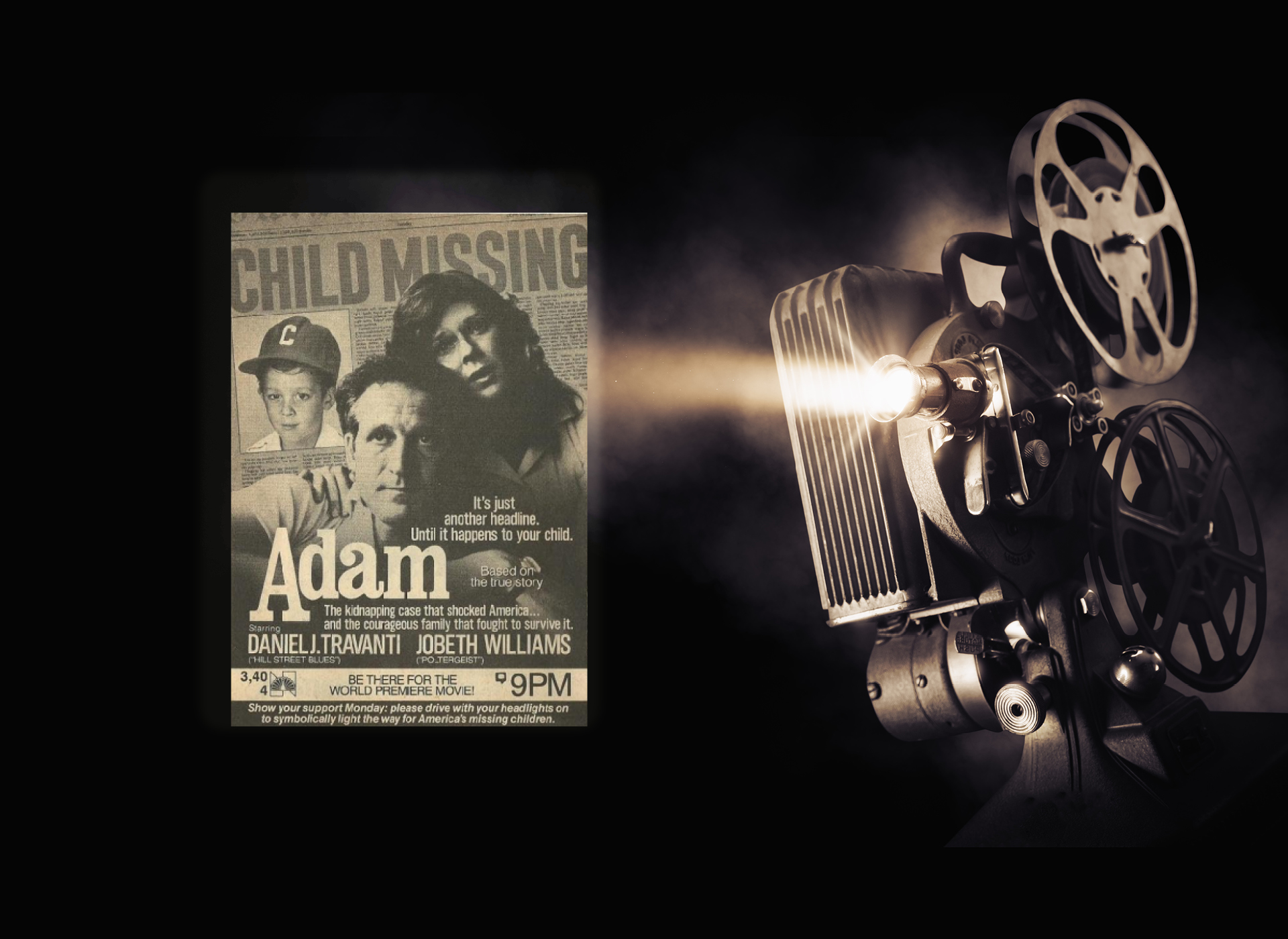"Adam": More Than a Movie
“Even strong men will weep after watching “Adam”. It’s one of the most moving made-for-TV movies, or for that matter, movie-movies that I’ve seen in a long while. If you’ve ever had a child, or been one, don’t miss it.”
-Peter Bunzel, Los Angeles Herald Examiner, October 9, 1983
On Oct. 10, 1983, people across the country tuned in to watch “Adam,” an NBC made-for-television movie that told the heartbreaking true story of Adam Walsh, a 6-year-old little boy who was abducted and murdered in Hollywood, Florida in 1981.
The movie begins on the day of Adam’s abduction, July 27, 1981, as viewers watch an emotional recount of John and Revé Walsh’s personal story. The film follows the same timeline as the actual events: Adam’s abduction, the desperate search for him that ends in devastating loss, and the Walsh family’s relentless fight to reform how cases of missing and exploited children are handled in the United States.
“It’s intended to create awareness, number one,” John Walsh told the press in 1983. “But if it makes just one parent hang on to their children and watch them closer, it was worth the whole tears and heartbreak of doing the movie.”

“Adam” original premiere poster (Credit: IMBD)
According to NBC Research, more than 22 million people viewed the movie during its original broadcast. Critics also praised the movie, calling it “emotional,” “heartbreaking,” “moving” and even “earth-shattering.” It would later receive several national honors and be nominated for four Primetime Emmy awards.
The movie gripped viewers, and not just because of its emotional weight, but because it spotlighted an issue that was often kept in the shadows – missing children in the United States.
As viewers followed the Walsh family’s heartbreaking journey in the film, they were also called to action. At the end of the broadcast, we hear from Adam’s real-life father, John Walsh, as he delivers an emotional message urging people to be vigilant in their role to find missing children:
“It’s too late for our Adam, but it’s not too late for the thousands of children who are still out there.”
And then, photos and names of 55 missing children appeared on the screens of more than 22 million viewers. It was the first time a national audience had seen missing children's photos broadcast this way.

Missing child roll-call from April 1985's showing of “Adam” (Credit: NBC Viewer Guide)
The response was overwhelming. At the time, the National Center for Missing & Exploited Children didn’t exist yet, so tips and calls were taken at the Adam Walsh Resource Center in Florida and at a New York organization, Child Find, Inc. In April 1984, an NBC viewer guide reported that Child Find, Inc. had taken more than 10,000 calls regarding the missing children shown at the end of the movie.
What began as one family’s darkest moment turned into a nationwide movement for justice and safety for children. Within the first six months of its release, 12 children were recovered as a direct result of the movie. One child actually saw her missing photo in a “TV guide” preview and returned home before the movie even premiered.
The movie was re-broadcast multiple times after its original air, both in 1984 and 1985, each time featuring a roll-call of missing children at the end – further establishing itself as more than just a movie, but a catalyst for change.
Which was exactly what the Walshes hoped it would be.

The Walsh family at a press conference after the 1985 airing of “Adam” (Credit: NCMEC)
Much like the lasting impact of the movie, the Walsh family’s journey didn’t end after the final credits of “Adam.” Following the events shown in the film, which included the passing of key legislation to help protect children, John and Revé went on to co-found the National Center for Missing & Exploited Children in 1984. Over the last 40 years, the pair have been true champions for children, ensuring that every child is promised a safe and happy childhood.
And much like the movie, each step of their journey is inspired by their little boy, Adam.
“It’s painful, but somebody’s got to do it. We loved Adam so much...we have to do something.”
-John Walsh, Ft. Lauderdale Sun Sentinel, May 1983

Photo of Adam Walsh shown at the end of “Adam” (Credit: the Walsh family)
For more information on NCMEC’s 40th anniversary, read our blog here: https://www.missingkids.org/blog/2024/40-years-of-hope.
